
We live in an age where the concept of superpowers has rapidly evolved from underground stacks of nerdy comics to an entire subculture that fills cinemas in the blink of an eye.
But wouldn’t it be neat if lightning-fast reflexes or inhuman strength were somehow part of our daily lives and not just a product of someone’s racing imagination? That this world harboured some weird creatures that could make even Superman jealous (and possibly insecure)?
Table of Contents
Weaver ants or how superglue came to be
Source: https://www.youtube.com/watch?v=Wex59IATah4
Weaver ants are the typical rebels who once said: “We don’t want to live in a hole in the ground anymore.” Lead by their boisterous spirit and their strive to evolve, Oecophylla smaragdina reached for the stars (or, in their case, the nearest tall tree).
Their unique ability is to build homes out of tree leaves. Their larvae produce thin silk that they also use for pupation, but which, in this case, acts as the glue that sticks the leaves together. Just imagine replacing traditional plaster with… you know what, forget what we said.
Trap-jaw ants – the snappiest ants alive
Source: https://www.youtube.com/watch?v=0hMGbHcvHIo
Your chances to slap the trap-jaw ant in the face are as slim as a rake. You may wonder how sorrowful their victims must feel when they get in between these horrifying mandibles until you learn, much to your surprise, that trap-jaw ants are not hostile at all! If they get into trouble, these tropical beings snap their jaws against the ground, and the sheer surge of the resulting kinetic energy fires them up and backwards at an astounding height of several feet.
This happens because the snapping of their jaws produces the fastest-ever recorded movement of a living species on Earth – 143 miles per hour! At this point, we think it’s fair to say that, when it comes to escaping from the enemy’s clutches, the Roadrunner has no choice but to bite the trap-jaw ant’s dust.
Bulldog ants – just as painful as a real bulldog
Source: https://www.youtube.com/watch?v=_vRRYsVUkwU
Bulldog ants fit right into the category of the typical Australian wild animal species – they just want to kill you or, at least, cause you excruciating pain. Bulldog ants are one of the nastiest insect species out there, and the continent down under is the rightful place for them to be in.
Apart from their ability to jump at great heights, their eyesight is one of the most powerful in the ant kingdom due to their oversized eyeballs. To give you an idea of just how sharp their sight can be, bulldog ants can discern minute objects at a distance of more than 25 times their length. With exceptionally aggressive behaviour, the bulldog ant is prone to causing painful and, sometimes fatal, bites.
You are dealing with an ant infestation? If you are scared to deal with those superpowers on your own, just book a professional pest control service to remove the ants from your premise.
Driver ants swarm their victims like the Biblical Flood
For an ant that is blind, “driver” might not be the most appropriate name. However, these weird species can cause whole areas in the African and Asian jungles to become ghost towns. They live a nomadic life, ultimately eradicating insects, dead corpses of larger animals, and pretty much anything else that’s edible and stands in their way.
Their swarming colonies can sometimes amount to 20 million individual ants… and that’s an army you definitely don’t want to mess with in any case. Due to their innate blindness, driver ants rely solely on their powerful senses of smell to make their way from their hives to their victims.
Dinosaur ants punish those who dare defy their queen
Source: https://www.youtube.com/watch?v=LdttBUQT5tM
Dinosaur ants are called that not only because of their whopping 1-inch-long size but also because of their primitive nature. Unlike in other ant colonies, here, all dinosaur ants are able to reproduce. However, there’s still a single queen, surrounded by beta females.
If any of the queen’s servants becomes greedy for power and decides to lay eggs and be the new queen, it’s subdued by the rest of the minions and pinned to the ground for sometimes up to four days.
Honeypot ants – Nature’s walking refrigerator
Source: https://www.youtube.com/watch?v=Vjae5RqODFc
Honeypot ants are widespread throughout Western America and Mexico, South Africa, Australia, and New Guinea. All honeypot ant species possess the unique ability to store food for rainy seasons in their bellies. Individual worker ants, called repletes, are being engorged to enormous belly size, sometimes to the point of being unable to move.
Honeypot ants usually feed on flowers for their nectar but can also be seen attacking insects. These living refrigerators are packed with so many nutrients that many other species, us included, are keen on hunting them down for a treat.
Hodor ants don’t build doors – they are doors
Source: https://www.youtube.com/watch?v=4N_YXoa3Dzc
Ants of the Cephalotes genus are called “turtle” ants, but we consider Hodor (the infamous Game of Thrones character’s name) to be a much more fitting name (minor spoiler alert for those of you who have yet to watch the 6th season of the show). They live in abandoned tunnels of wood-boring beetles and, to keep themselves safe from the external environment, they use their disk-shaped heads as living doors.
Another extraordinary fact about Hodor ants is that they resemble humans in one fascinating way – they have a gut bacteria that helps them dissolve their food.
Shut the door for the pests! Want to remove an ant colony from your property? Book a professional ant control service today!
Fire ants – fire starters with a deadly alkaloid venom
Imagine a small piece of burning amber touching your skin – that’s the feeling you get after a fire ant bite. Their alkaloid venom is toxic to animals and potentially deadly to sensitive people. They are considered invasive pests and spread like wildfire (no pun intended).
Fire ants came to the US back in the 1930s, and today they spread out to several different states, predominantly in the southern part of the country. Once settled, the fire ants burn the ecosystem around them to the ground as they chew on the animal kingdom in the area.
Read more: Types of Ants in the UK
The Diving ants plunge into the unknown for a living
Source: https://www.youtube.com/watch?v=zVDdNDM7yVs
No, this is not an ant that dives in a water basin to hunt for fish, but you are not far from the actual truth. What this incredible species of ant do is dip into the digestive fluids of the carnivorous pitcher plant called Nepenthes bicalcarata. There, it looks for arthropods that have fallen prey to the plant’s cunning trap and fishes them out to enjoy a fresh meal.
You can find diving ants in the rainforests of Borneo island, with their nests being inside the tendrils of pitcher plants. You might be thinking that these insects are thieves and parasites, but by doing what they do, they also clean up and help the plants digest their food and stay healthy. It’s a win-win for everyone involved. Well, except for the arthropods that fell inside.
Amazonian ants have mastered the art of trap making
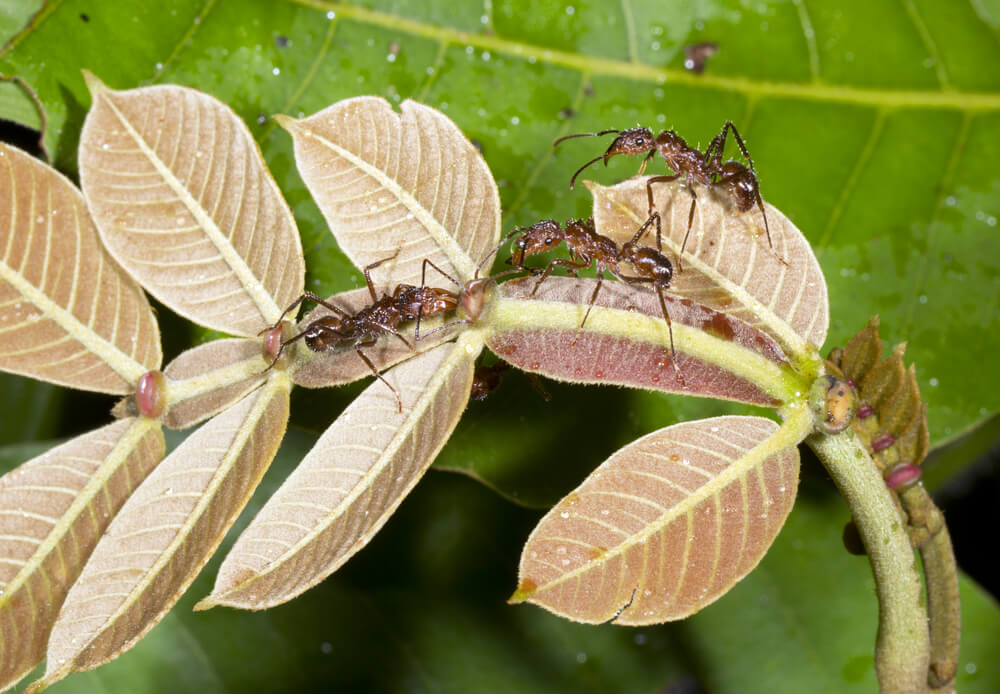
Source: Dr Morley Read / Shutterstock.com
The Allomerus decemarticulatus species is native to the tropics of South America. They are featured on this list because of their unique way of ambushing unwary giant insects. Amazonian ants use a particular kind of fungus that they grow themselves – it’s never present in stems that weren’t touched by these ants.
When the unsuspecting insect lands on a stem full of those trap holes, the predator insects swoop in and catch it with their mandibles. Then, they slowly drag the captive to a leaf pouch, where they tear their prey apart. Ouch.
Suicide ants explode in a desperate act to protect their colonies
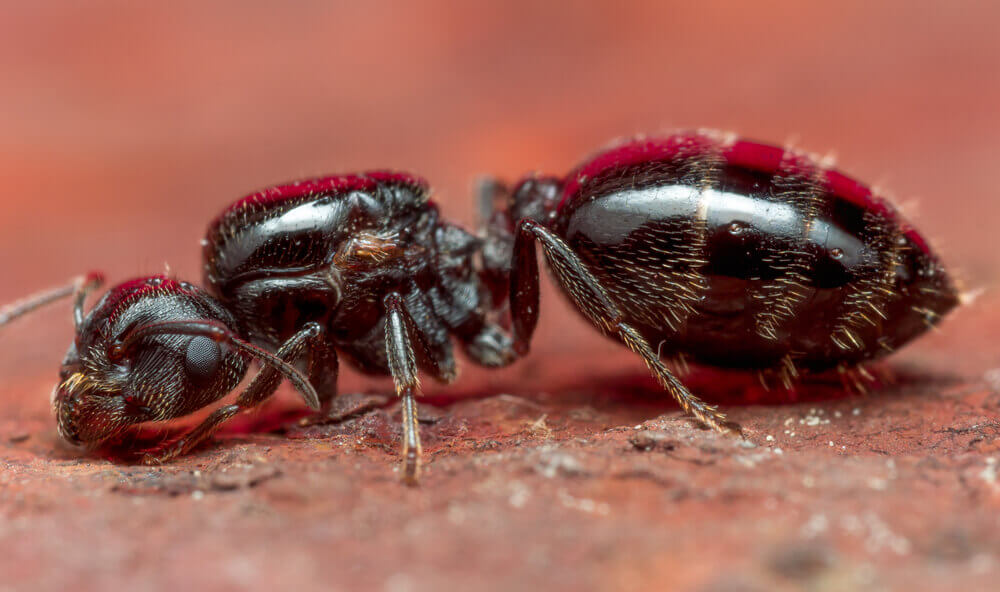
Source: Steven Ellingson / Shutterstock.com
A subspecies of the widespread carpenter ants living in the deep jungles of Malaysia and Borneo, Suicide ants possess the fatal ability to make their mandibles explode. They are filled with a viscous liquid that chases off predators, but their combustion comes at a steep price.
A final act of defence – one of the most devoted ways to protect the colony in the face of insurmountable odds, the suicide ant deserves a memorable spot in our list alongside a few medals of honour.
Dealing with an ant colony? You don't have to be alone in the battle against pests. Hire a professional pest expert!
Parasite ants will steal whatever they can to survive
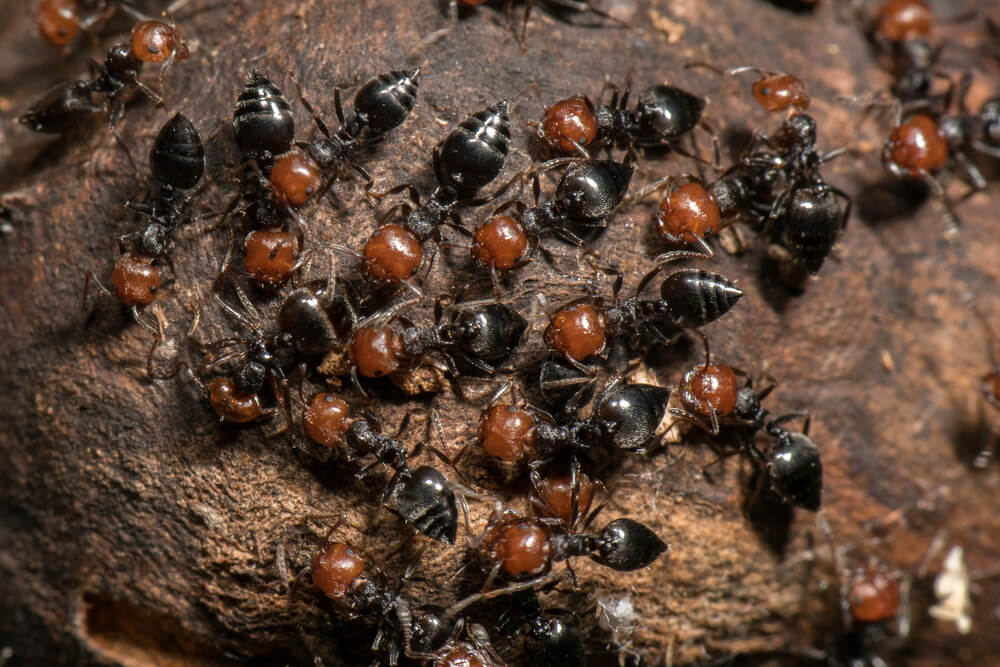
Source: Pavel Krasensky / Shutterstock.com
You can find slackers even amongst the most labour-loving species in this world. Parasite ants live in the forests of South America, and they specialise in snatching food from other ant colonies by creating a pheromone diversion. And as if that wasn’t enough, they could also be found directly infesting the attacked colony’s ant queen!
Dracula ants survive by… sucking the blood of their larvae
Slave-maker ants subdue entire ant colonies to their will
Source: https://www.youtube.com/watch?v=IZ8UnItcTrA
With so many astonishing methods of everyday survival, you would think that ants will run out of creativity soon. But that’s hardly the case. Several different species of insects throughout the world practice the ability of slave-making. You’ve read this right – they raid ant colonies, capture their eggs and, subsequently, raise them as slaves.
However, the enslaved ants are forced to work seemingly endless shifts for another colony instead of working seemingly endless shifts for their own brethren. We guess it’s a win for those who would benefit from a change of scenery.
Check also:
The erratic Crazy ants cover themselves with acidic antivenom
Source: https://www.youtube.com/watch?v=CaAq25JQM4k
Crazy ants originate in South America, but have recently spread out throughout Southern US states and, in Texas, you can frequently spot the usual heap of ants. Indeed, they come in billions, and even though they die off towards the end of the summer, the queen remains alive and gives birth to billions upon billions of crazy ants.
With their ability to cover themselves in a poison neutraliser, crazy ants can easily withstand the bites of the fire ants, making them their public enemy number one.
Crematogaster striatula spray their enemies with poisonous chemicals
Source: https://www.youtube.com/watch?v=rrBo-wpAZn0
We decided to use the biological name of the Crematogaster ant as it does sound like a robot coming from the future, with the sole intent of shooting the hell out of you. These insects possess a unique defence mechanism of spraying chemicals at a distance. They use this ability to not only hunt down their dinner but also to repel other invasive ants.
And the great thing about it is that, unlike with the Suicide ant, their poisonous glands do not lead to their inevitable demise. We still can’t get over that sad swan song.
Spot the Ghost ants… if you can!
Compared to other species, the ghost ant is a lilliput – 1,3 to 1,5 mm long. Their size, combined with their pale whitish colour, is what earns them the name. Considered an invasive pest in America, they raid houses looking for food. Thanks to the ghost ants’ physical appearance, it’s often tough to spot them, which is one of the leading causes for concern when it comes to ant pest control.
Bullet ants are the second worst thing after a bullet wound
Source: https://www.youtube.com/watch?v=tXjHb5QmDV0
Bullet ants are infamous for their very powerful sting. Amounting to 1-inch in size, the bullet ant has been nicknamed the “24-hour ant”, the hours marking the long-lasting pain effects from its bite. Imagine walking on fire while having a nail stuck in your heel and being shocked by a high-voltage current – the bullet ant’s sting is just that painful. To put it more simply, it’s somewhere between stepping on a lego and hitting the coffee table with your little toe.
The only people in the world that can handle this amount of pain are, apparently, the 12-year-old boys of the South American Mawe tribe. They perform a special coming-of-age ritual where they put on custom-tailored gloves full of bullet ants. 200 minutes of bullet ants’ excruciating stinging, divided into even 10-minute intervals is what prepares the boys for adulthood.
Velvet ants will shake your understanding of what true pain is
Source: https://www.youtube.com/watch?v=4-K0UV5dx84
Velvet ants may even look cute to some, with their colourful and fluffy fur and all. That is until you realise you don’t have a little kitten in front of you, but a full-sized and painfully stinging wasp. Velvet ants produce an agonising sting that can leave you shaking for hours on end.
In the unlikely event, you don’t see their vividly coloured torsos crawling on your floor, you may recognise the velvet ants from the strange haunting sounds that they make.
Gliding ants will glide away at the first sight of trouble
Source: https://www.youtube.com/watch?v=-YFt2L2GOMg
A slip doesn’t count as hilarious if you do it fabulously and still keep your cool. The gliding ant understands this all too well. It’s native to the South American tropical forests, with the first sighting occurring in Peru.
If you happen to stroll there and accidentally shake a leaf, you might witness the spectacular glide of the ant, which, while falling, will get immediately attracted to the tree’s trunk like a magnet. The ant uses this ability to escape obstacles and predators, making it one of the coolest ants roaming the Earth.
Leafcutter ants have chosen to become full-time gardeners
Source: https://www.youtube.com/watch?v=Xxnmh4IDYaU
Humanity is not the first species that introduced agriculture on our planet. In fact, we are one of the latest to join these customs, as leafcutter ants have been doing it for millions of years. You can meet flocks of leaf-cutter ants carrying their crops in the USA, Mexico, as well as the tropics.
These gardener ants cut out fresh leaves with their sharp mandibles, which they later bring to their nests to feed a particular type of bacteria that lives in symbiosis with the ants. That means that both organisms have become so co-dependent that they cannot survive on their own – the insects supply their guests with fresh nutrients in the form of leaves, while the fungi grow to later on become a reliable food source for the ants.
Sources:
- https://theconversation.com/australian-endangered-species-dinosaur-ant-21603
- http://antark.net/ant-species/honey-pot-ant-myrmecocystus-mexicanus/
- https://www.newscientist.com/article/dn21747-zoologger-the-ant-that-dives-into-digestive-juices/
- https://www.livescience.com/207-amazing-ants-ambush-prey-foxholes.html
- https://www.livescience.com/44479-new-dracula-ant-species.html
- https://listverse.com/2013/12/31/10-bizarre-ant-behaviors/
- https://www.bbc.co.uk/programmes/p02544td

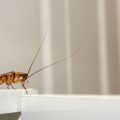


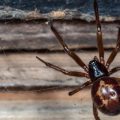
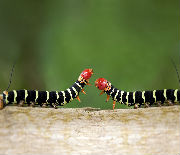
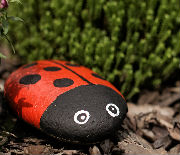
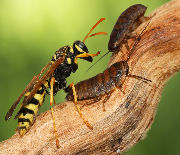
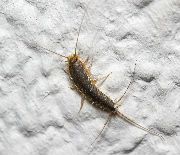
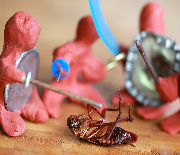
I was pleased to read it, great article :3
In case you don’t know, crazy ants can literally make males completely unrelated to themselves so their colonies can practically stay there forever and their numbers make it practically impossible to kill in battle.
Last fall, I battled honey ants all over my house. I finally used a poison that they take back to their colony and feed it to the ants there, eventually killing the queen and wiping it out, so the directions said. I eventually had to seal everything up. If they couldn’t get in one way, they found another. They devoured the poison by the gallon. They loved it! They swam around in it. They drowned in it. Then the cold hit and I had a reprieve over the winter months (I live in SoCal). Last week, a few ants found their way into the bathroom. I got out the poison and left it for them. I watched them test it, but only one or two actually entered the container. Then, they all disappeared. A few days later, there were a few in the kitchen. Same thing. Got out the poison and left them to it. After a few hours, the kitchen was deserted. So I am wondering if they remember and learned from the experience last fall and are avoiding the poison, or if this is a whole new batch that is just not interested in the stuff.